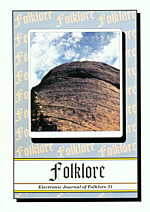Cosmic Hunt: Variants of Siberian-North American Myth
Cosmic Hunt: Variants of Siberian-North American Myth
Author(s): Yuri E. BerezkinSubject(s): Customs / Folklore
Published by: Eesti Kirjandusmuuseum
Keywords: comparative; Siberian; Central Asian; American Indian; Eskimo mythology; star names in folk tradition; settling of America
Summary/Abstract: The mythological motif of the Cosmic Hunt is peculiar to Northern and Central Eurasia and for the Americas but seems to be absent in other parts of the globe. Two distinct Eurasian versions demonstrate North-American parallels at the level of minor details which could be explained only by particular historical links between corresponding traditions. The first version (three stars of the handle of the Big Dipper are hunters and the dipper itself is an animal; Alcor is a dog or a cooking pot) connects Siberian (especially Western Siberian) traditions with the North-American West (Salish, Chinook) and East (especially with the Iroquois). The second version (the Orion’s Belt represents three deer, antelopes, mountain sheep or buffaloes; the hunter is Rigel or other star below the Orion's Belt; his arrow has pierced the game and is seen either as Betelgeuze or as the stars of Orion's Head) connects the South-Siberian – Central-Eurasian mythologies with traditions of North-American West – Southwest. Both variants unknown in Northeast Asia and in Alaska probably date to the time of initial settling of the New World. The circum-Arctic variant(s) (hunter or game are associated with Orion or thePleiades) are represented by neighbouring traditions which form an almost continuous chain from the Lapps to the Polar Inuit. This version could be brought across the American Arctic with the spread of Tule Eskimo.
Journal: Folklore: Electronic Journal of Folklore
- Issue Year: 2005
- Issue No: 31
- Page Range: 79-100
- Page Count: 22
- Language: English

